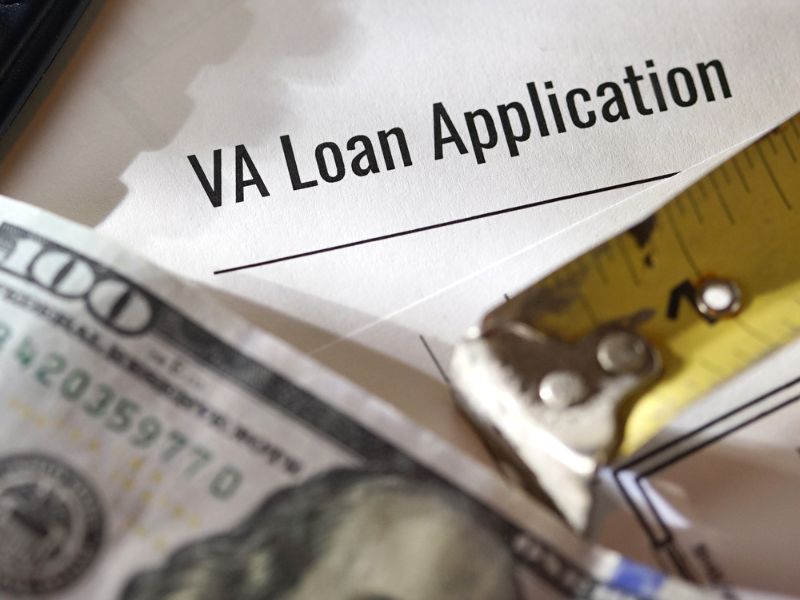 Embarking on the journey of homeownership is an exciting and significant step in one’s life. One crucial aspect of this process is the down payment, which can greatly influence the terms of your mortgage. In this blog, we will delve into various down payment options and examine how they can impact your mortgage terms.
Embarking on the journey of homeownership is an exciting and significant step in one’s life. One crucial aspect of this process is the down payment, which can greatly influence the terms of your mortgage. In this blog, we will delve into various down payment options and examine how they can impact your mortgage terms.
Understanding Down Payments: A down payment is a lump sum payment made upfront when purchasing a home. The standard down payment is often 20% of the home’s purchase price. However, many homebuyers may find it challenging to accumulate such a substantial amount. Thankfully, there are alternative down payment options that cater to different financial situations.
Traditional 20% Down Payment: The traditional down payment of 20% is widely considered the gold standard. By putting down 20%, you may avoid private mortgage insurance (PMI), which is an additional cost for those who put down less than 20%. A higher down payment can also result in a lower interest rate, reducing the overall cost of your mortgage.
FHA Loans (3.5% Down Payment):
The Federal Housing Administration (FHA) offers loans with a down payment as low as 3.5%. This option is particularly beneficial for first-time homebuyers or those with a limited budget. Keep in mind that with a lower down payment comes the requirement for mortgage insurance throughout the life of the loan.
VA Loans (0% Down Payment): Veterans and active-duty military personnel may qualify for VA loans, which often require no down payment. This can be a significant advantage, allowing those who have served our country to become homeowners without the immediate burden of a down payment.
USDA Loans (0% Down Payment in Eligible Rural Areas): The U.S. Department of Agriculture (USDA) offers loans with no down payment for eligible homebuyers in rural areas. These loans aim to promote homeownership in areas that may otherwise face economic challenges.
Impact on Mortgage Terms: The amount you put down upfront can have a substantial impact on your mortgage terms. Let’s explore how different down payment options influence key aspects of your mortgage:
Interest Rates: Generally, a higher down payment can lead to lower interest rates. Lenders often view a larger down payment as a sign of financial stability, reducing the risk associated with the loan.
Loan Duration: The size of your down payment can affect the length of your loan. A larger down payment may provide you with the flexibility to choose a shorter loan term, potentially saving you money on interest in the long run.
Monthly Payments: A larger down payment typically results in lower monthly mortgage payments. This can enhance your financial security and make homeownership more sustainable.
Private Mortgage Insurance (PMI): If your down payment is less than 20%, you may be required to pay PMI. This additional cost can significantly impact your monthly payments, making it essential to weigh the benefits of a lower down payment against the long-term cost of PMI.
Selecting the right down payment option is a crucial decision in the homebuying process. By exploring various choices and understanding their impact on mortgage terms, you can make an informed decision that aligns with your financial goals and circumstances. Whether you opt for a traditional 20% down payment, an FHA loan, a VA loan, or a USDA loan, each option has its advantages and considerations. Take the time to assess your financial situation and consult with a mortgage professional to determine the down payment strategy that best suits your path to homeownership.
 In the rapidly evolving landscape of real estate, smart homes are emerging as a transformative force, reshaping the way we live and interact with our living spaces. Automation and technology have become integral components of modern homes, offering unprecedented levels of convenience, efficiency, and sustainability. This article delves into the burgeoning realm of smart homes, exploring the impact of automation and technology on the real estate industry and the future trends that promise to redefine our concept of home.
In the rapidly evolving landscape of real estate, smart homes are emerging as a transformative force, reshaping the way we live and interact with our living spaces. Automation and technology have become integral components of modern homes, offering unprecedented levels of convenience, efficiency, and sustainability. This article delves into the burgeoning realm of smart homes, exploring the impact of automation and technology on the real estate industry and the future trends that promise to redefine our concept of home. Securing a mortgage is a significant milestone on the path to homeownership. As you embark on this journey, you’ll likely encounter various terms and ratios that play a crucial role in the approval process. One such essential factor is the Loan-to-Value ratio, commonly known as LTV. Understanding LTV is paramount, as it not only influences your chances of mortgage approval but also affects interest rates and the required down payment. We will delve into the significance of LTV and its pivotal role in the mortgage application process.
Securing a mortgage is a significant milestone on the path to homeownership. As you embark on this journey, you’ll likely encounter various terms and ratios that play a crucial role in the approval process. One such essential factor is the Loan-to-Value ratio, commonly known as LTV. Understanding LTV is paramount, as it not only influences your chances of mortgage approval but also affects interest rates and the required down payment. We will delve into the significance of LTV and its pivotal role in the mortgage application process. With the release of the CPI and PPI we received a clearer picture of what’s ahead. With the inflation numbers for CPI (Consumer Price Index) arriving a bit warmer than expected, there was some speculation that it could cause some hesitation from the Federal Reserve on reducing rates for this year.
With the release of the CPI and PPI we received a clearer picture of what’s ahead. With the inflation numbers for CPI (Consumer Price Index) arriving a bit warmer than expected, there was some speculation that it could cause some hesitation from the Federal Reserve on reducing rates for this year. Martin Luther King Jr. Day serves as a touching reminder of the permanent mark left by one of the most influential figures in the American civil rights movement. This day is more than just a public holiday; it’s a celebration of the enduring values of equality, justice, and the ongoing pursuit of a more inclusive society.
Martin Luther King Jr. Day serves as a touching reminder of the permanent mark left by one of the most influential figures in the American civil rights movement. This day is more than just a public holiday; it’s a celebration of the enduring values of equality, justice, and the ongoing pursuit of a more inclusive society. In the pursuit of the American dream, many individuals find themselves walking a tightrope between educational aspirations and the desire to own a home. The burden of student loan debt can often seem impossible, making the prospect of homeownership feel like a distant dream. With strategic planning and disciplined financial management, it’s possible to strike a balance between educational debt and homeownership goals. Here are a few effective strategies to help you navigate this delicate balancing act.
In the pursuit of the American dream, many individuals find themselves walking a tightrope between educational aspirations and the desire to own a home. The burden of student loan debt can often seem impossible, making the prospect of homeownership feel like a distant dream. With strategic planning and disciplined financial management, it’s possible to strike a balance between educational debt and homeownership goals. Here are a few effective strategies to help you navigate this delicate balancing act. Obtaining a mortgage can seem to be filled with perplexing terms and concepts. Don’t worry, though – we’re here to decode the complexities and make it easy for you to navigate the mortgage landscape with confidence. Let’s break down some of the most common and confusing terms in simple, easy-to-understand language.
Obtaining a mortgage can seem to be filled with perplexing terms and concepts. Don’t worry, though – we’re here to decode the complexities and make it easy for you to navigate the mortgage landscape with confidence. Let’s break down some of the most common and confusing terms in simple, easy-to-understand language. Becoming a landlord can be a profitable undertaking, providing a steady income stream and potential long-term investment growth. It is important to understand the complexities of managing a property while still under a mortgage. We will discuss the key insights into renting out your property and becoming a landlord while maintaining a mortgage.
Becoming a landlord can be a profitable undertaking, providing a steady income stream and potential long-term investment growth. It is important to understand the complexities of managing a property while still under a mortgage. We will discuss the key insights into renting out your property and becoming a landlord while maintaining a mortgage. For the brave men and women who have served in the armed forces, the dream of homeownership becomes more attainable and rewarding through the power of VA loans. We will discuss the unique features that make VA loans a tool for veterans, empowering them to secure homes with financial flexibility and favorable terms.
For the brave men and women who have served in the armed forces, the dream of homeownership becomes more attainable and rewarding through the power of VA loans. We will discuss the unique features that make VA loans a tool for veterans, empowering them to secure homes with financial flexibility and favorable terms. With the first FOMC minutes of the year, it sets the tone of the potential moves the Federal Reserve will make, with them remaining firm in their current stance of not employing any rate cuts, however given the more recent end of year reports, there is a likelihood that rate cuts will start this year. The last change in rates was in July of last year. The second most important report also being the final PMI (Manufacturing) numbers, which has largely met expectations without any irregularities.
With the first FOMC minutes of the year, it sets the tone of the potential moves the Federal Reserve will make, with them remaining firm in their current stance of not employing any rate cuts, however given the more recent end of year reports, there is a likelihood that rate cuts will start this year. The last change in rates was in July of last year. The second most important report also being the final PMI (Manufacturing) numbers, which has largely met expectations without any irregularities.